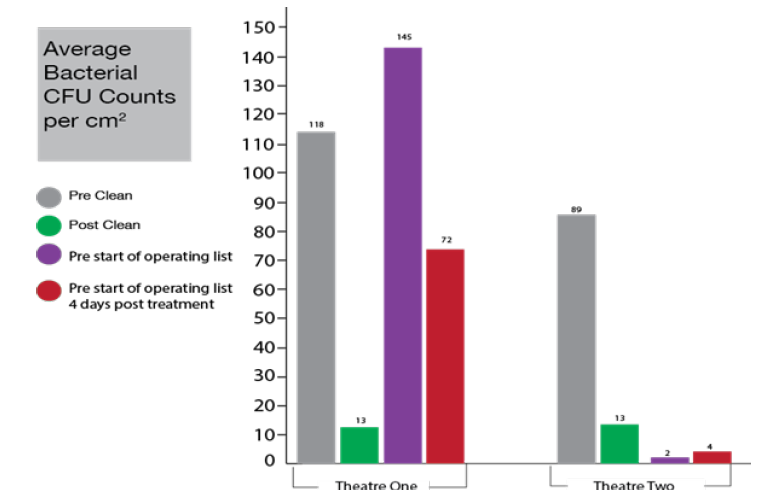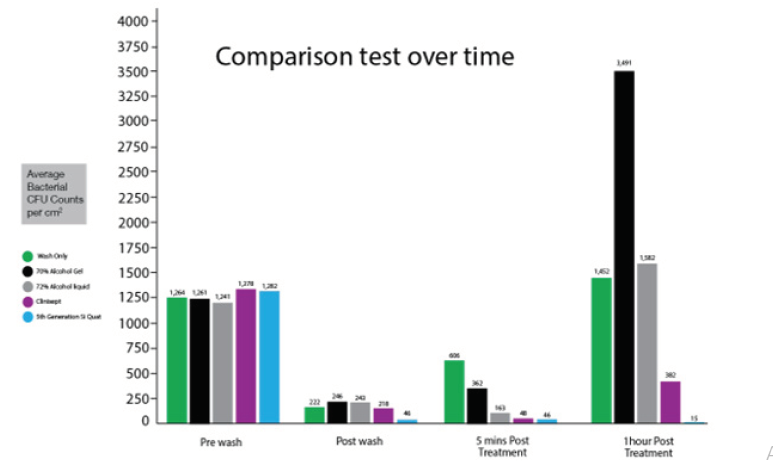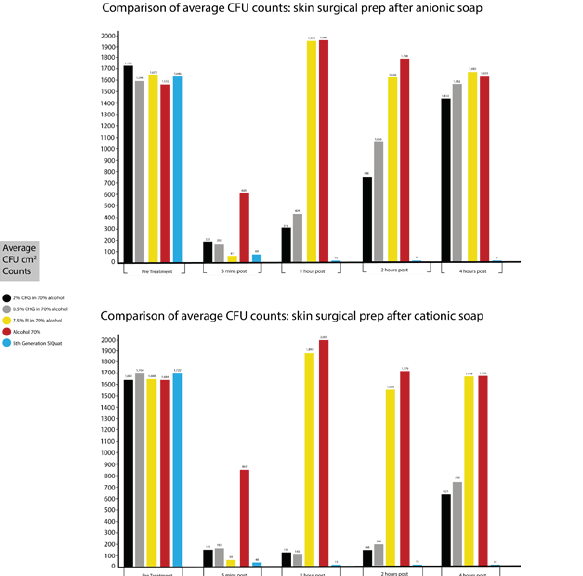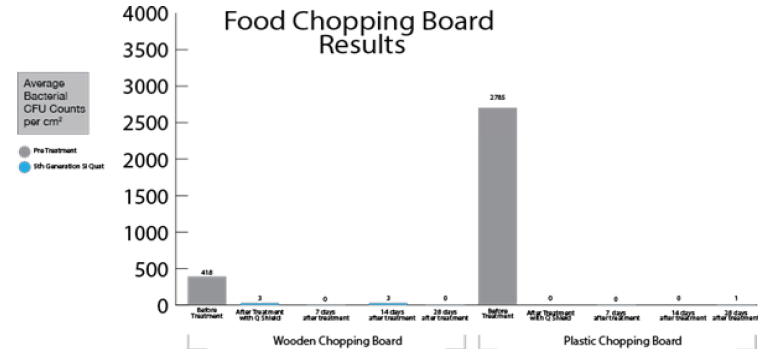Research Article 
 Creative Commons, CC-BY
Creative Commons, CC-BY
Does the “Holism theory” Explain the Increase in Antimicrobial Efficacy and the Lack of Acquired or Innate Resistance to 5th Generation Silane Quaternary Compounds?
*Corresponding author: Andrew Kemp, Head of the Scientific Advisory Board, British Institute of Cleaning Science, Sparkhouse Building, University of Lincoln Rope Walk, Lincoln, LN67DQ, UK
Received: January 22, 2020; Published: January 29, 2020
DOI: 10.34297/AJBSR.2020.07.001118
Abstract
The “Holism theory” is credited to Aristotle, who said “the whole is greater than the sum of the parts”. From a purist point of view, it is unlikely that he actually said those exact words.
Decontamination and disinfection are enormous subjects individually and, can be of mind-boggling complexity. The activity of disinfectants against microorganisms depends on a number of factors, some of which are intrinsic qualities of the organism, others of which are the chemical and external physical environment.
Background
There are essentially two main groups of quaternary ammonium compounds (Quats), those that have a silane attached, and those that do not. Whilst their mode of action (MOA) is essentially the same, the spectrum of species kill and the level of persistence are very different for each variation. The silane versions of the Quats (SiQuats) will bond to surfaces and skin and become, in some cases, almost impossible to remove without wearing away the surface to which they are bonded. The resultant effect, therefore, is an antimicrobial compound that remains in place killing microbes for days months or years [1, 2, 3].
Properties of Quats and SiQuats
The biggest problem with these compounds is the difficulty in mixing them together to form multiple SiQuat compounds that have a full spectrum of kill. They either stick to each other and not the intended surface, or break apart leaving an unstable, unpredictable compound [4]. Since 1952, many chemical manufacturers have tried and failed to produce these multiple 5th generation compounds, the goal being to produce a persistent, rapid acting compound with a full spectrum of microbial kill. There are two main reasons why this goal has been so keenly sought after.
a. Increased efficacy.
b. Decreased potential for microbial resistance to build up against the compound.
Organisations such as NASA, have combined Quat compounds in an effort to kill bacteria on the International Space Station (ISS), only to find that they produce bacteria that are resistant to Quats and now multiple Quats [5]. One of the mechanisms that bacteria can use to become resistant to disinfectants is known as the Efflux pump [6]. If a bacterium comes into contact with a disinfectant at subtherapeutic levels, it has the potential to gain resistance to that disinfectant in the same way as it may do if it came into contact with an antibiotic at subtherapeutic levels. In fact, in some cases by becoming resistant to either one, it has been proved that it can then become resistant to both [7]. It is possible that had NASA used a 5th generation SiQuat compound, instead of a simple multiple Quat combination, that resistance could have been avoided, as SiQuats do not reduce in therapeutic efficacy over time.
SiQuat Generational Differences
Quats first appeared in around 1915 and were used in many areas of industry and in the military as surfactants and disinfectants. It is difficult to trace exactly, but it is likely that resistance to these was first seen early in the 2nd world war, when combinations were tried to reduce resistance and improve disinfection. SiQuats did not arrive until after the midpoint of the century, with continued improvement in efficacy. The following are the approximate years when generational improvements occurred.
1st Gen – Patented in 1952 by Dow Corning as a single long chain molecule. They are removed from skin and surfaces fairly easily. They have a broad spectrum within a narrow temperature range. They will have a limited kill in Gram neg bacteria. They will be deactivated by anionic soaps and surfactants.
2nd Gen – First appeared in the 1960’s. They have similar properties to the 1st generation as above, with different chain lengths to improve kill spectrum and temp ranges. Similarly, they have a limited kill in Gram neg bacteria, and they will be deactivated by anionic soaps and surfactants.
3rd Gen – Developed in the late 1960’s they appeared for the first time in the early 70’s. They have Improved characteristics including, improved bonding, a broader spectrum of kill, and a significant improvement in Gram neg kill. They will still see reduced activity in the presence of anionic soaps and surfactants.
4th Gen – Developed from the mid 70’s onwards, they have improved bonding, becoming much more difficult to remove from a surface. With multiple long chain lengths, they achieve a broader spectrum of kill, within a much greater temperature range. Again, they will see some reduction in efficacy in the presence of anionic soaps, surfactants.
5th Gen – 2008. These formulations are comprised of two or more 4th Generation Si Quats with or without one or more standard Quats/ SiQuats in compound together. By selecting different combinations of Si Quats and Quats, it is possible to target increased efficacy against individual bacteria or viral species and increase efficacy at different temperatures dependant on environmental needs. Significantly, they are not deactivated by anionic soaps and surfactants.
Is the “Holism theory” relevant for the 5th generation SiQuats?
There are numerous comparisons that could all point to this simple yet complex truth. The most compelling and closely related theory is probably the “entourage effect” [8, 9] . The entourage effect is a proposed mechanism by which cannabis compounds act synergistically to modulate the overall psychoactive effects of the plant, primarily by the action of tetrahydrocannabinol (THC). The current wave of excitement in Cannabis commerce has translated into a flurry of research on alternative sources, particularly yeasts, and complex systems for laboratory production have emerged, but these presuppose that single compounds are a desirable goal. Rather, the case for Cannabis synergy via the “entourage effect” is currently sufficiently strong as to suggest that one molecule is unlikely to match the therapeutic and even industrial potential of Cannabis itself as a phytochemical factory. The astounding plasticity of the Cannabis genome additionally, obviates the need for genetic modification techniques. In 1998, Professors Raphael Mechoulam and Shimon Ben-Shabat posited that, the endocannabinoid system demonstrated an “entourage effect” in which a variety of “inactive” metabolites and closely related molecules markedly increased the activity of the primary endogenous cannabinoids, anandamide and 2-arachidonoylglycerol [10]. This and many other studies support the hypothesis that, greater efficacy is obtained when combining the multiple anticonvulsant components, rather than using individual known anticonvulsants in the cannabis plant.
When this same hypothesis is applied to the 5th generation Si- Quats, we see a similar picture. Bacteria and viruses, in particular, that are normally considered to be resistant to Quats and SiQuats, are being killed by the 5th generation SiQuats. These differences in resistant microbes, and the lack of acquired resistance were not seen initially, as there were issues surrounding accurate testing of efficacy.
There were three main problems with differentiating the efficacy and longevity of the 5th generation SiQuats when compared to previous generations of individual SiQuats;
a. In 2008 (when the first 5th generation compounds were developed) there was no way of proving that the SiQuats were still available and active on any given surface, as there was no reliable test for their presence.
b. The actual efficacy tests themselves were designed for internal medicine and then adapted for use on surfaces and skin testing. Whilst useful for determining species, they are not sensitive enough to be able to count actual numbers of colony forming units (CFU’s) [8, 10].
c. The standard tests for microbial efficacy were poorly designed for use with chemicals that are most efficacious when dry. As most other disinfectants are only active when in their wet state, the standard tests reflect efficacy during or immediately after the wet phase. In addition, the tests are for short periods of time as efficacy over time is not expected with most other disinfectants.
The first two of these problems were solved by 2016, with the final problem solved by the middle of 2019. The data results in papers written since 2016 clearly show there are significant advantages in longevity and efficacy between the previous generations and the 5th generation Si Quats. Data to be published in the near future will show that dry surface testing over extended time periods is a far more accurate and reliable test for surface disinfection results than the current standard wet tests.
In 2016, Dr Phil Walker produced a test for persistence of Quats and Si Quats on surfaces. The method uses a metal solution (copper) with a metalachromic indicator. The indicator reacts with the copper to produce a red colour. The cationic moieties in the Quat/ SiQuat will react with the copper/indicator complex causing a bathochromic shift from the red to the blue end of the spectrum. The test uses a dilute version of the copper/indicator complex, so that the small amount of the cation removed from the surface is not overwhelmed by the unreacted excess of the copper/indicator complex.
Also, in 2016 the release of a biological warfare test known as the Bacteria Specific Rapid Metabolic Assay (BSRMA), has allowed us to see accurate numbers of live bacteria on surfaces, pre and post disinfection [11]. In 2019, an MSc student at the University of Lincoln, competed testing using a newly developed procedure for dry surface testing.
Used in conjunction with standard culture techniques and PCR, these new tests and test methods are beginning to shine a light on the true levels of bio burdens on our hands, in our operating rooms and in our homes.
Results using 5th generation SiQuats
Whilst we do not yet fully understand the impact of persistent disinfectant technologies on the number and type of surgical site infections (SSI), the type of organism as opposed to the species of organism infecting a wound is rarely seen to be an issue in most studies. It must be questioned as to why not? Surely the type of organism, will give an indication of where it came from, whether from the air, surfaces, or the skin of the operating staff. Species alone does in some respects give an indication, but genetic sequencing would give us a much better idea of the source of the organism [8].
In early 2018 over a 3-month period, a problem appeared in a specialist orthopaedic surgery unit, where 252 primary joint replacements were completed. 115 were hip replacements with 137 knee replacements. The SSI rates for each were hips 6.1% and knees 5.8%. Prior to this, the SSI rates had been below 0.5% for both types of surgery. The spike in infection rates was of great concern to all working in the unit. It was felt that the environmental microbial contamination must be to blame, although swabbing and standard culture produced no conclusive results. Using standard culture techniques, no relationship could be found between bacteria in the air or on surfaces and those colonising the surgical wounds. After swab testing using the BSRMA technique [8], one of the operating rooms was treated with a 5th generation SiQuat, and one was not. The standard daily cleaning regime continued, and after the first week the 2nd room was then treated. As the BSRMA tests had revealed a similar number of bacteria left alive after cleaning with hypochlorite, a species study showed a streptococcus that was resistant to hypochlorite (this result was not available until Friday of the first week).
BSRMA surface testing continued at various times of the day, most notably, prior to operating lists commencing each morning. The Veri Quat tests (Aqua tests) were also used to verify the presence of the SiQuats, and this testing continued for 6 months after treatment. Over the next 6 months 593 primary joint replacements were undertaken (294 hips, 299 knees); SSI rates were reduced to zero. Whilst there can be no doubt that the Hawthorn effect used in Goodhearts law [1] had some part to play in the reduction, most notably a further 6 months later the Veri Quat tests started to show that the SiQuat was beginning to wear away, and infection rates began to rise again. Over that 6 months period (6-12 months after surface treatment) 489 primary joint replacements were undertaken with 4 infections, equating to a 0.8% SSI rate. The same 5th generation SiQuat was then used to re treat the areas the Veri Quat tests had identified areas where the SiQuat was no longer present, and the SSI rates returned to zero. The following graph shows the results of the BSRMA tests over the first week (Figure 1).
These results are of interest when we consider the most important time to surface test, which has to be just prior to the operating lists starting each morning. At this critical time, this evidence shows that the standard cleaning had shown no benefit to surface counts in the untreated room. This combined with the identification of a previously unseen resistant streptococcus, begs the question “how many other operating theatres do not know what their surface contamination levels are prior to the commencement of surgical lists”?
Results
The following are a selection of test results of 5th generation Si- Quats, as compared to more widely used disinfecting chemistries using the BSRMA surface tests.
Hands Sanitisers
The graph below, shows the results of CFU counts on hands when comparing, washing with soap and water, alcohol 70% gel, alcohol 70% in water, Clinisept and a 5th generation SiQuat. Each group had 100 participants (200 hands), and the counts were averaged for each participant, and then in each group (Figure 2). There are now, numerous papers describing the poor results of bioburden on hands after using alcohol on its own [1, 12, 13], yet it is still the number one choice of hand sanitiser in most healthcare facilities around the world. It is clear from the above results, and from numerous papers, that the effect of alcohol is limited to both time and species kill (Enterococcus, Norovirus etc). The fact that it also causes a dominant species change from Staphylococcus epidermidis to a much more pathogenic Bacillus cereus is an added cause of great concern [12]. Again, because hospitals do not routinely test surfaces for numbers or species of bacteria (and if they do, they rarely publish the results), we have no way of knowing how this negative effect on hands is affecting the surfaces in hospitals.
Surgical Skin preparation
In 2017 the United States Centre for Disease Control (USCDC), published the long-awaited update to its 1999 guidance on prevention of surgical site infections [14]. According to the new recommendations, the preparation of skin prior to surgery is now considered to be a single issue with a 2-stage procedure. Stage 1 is to ensure that the patient pre-operatively showers, and Stage 2 is to use a skin disinfectant to clear the skin edges and surrounding area of bacterial load immediately prior to incision. One of the skin disinfectants recommended is Chlorhexidine Gluconate (CHG) in 70% alcohol, despite the clear evidence that this is affected by the ionic charge from soaps, a message that the authors missed, even though it is stated definitively by the WHO [15]. The following graph uses the BSRMA test to determine CFU counts on the skin around surgical wounds over a 4-hour period after application of CHG as compared to a 5th generation SiQuat when anionic (Figure 3). These results again clearly show the benefit of using persistent technologies over non persistent technologies. Although the USCDC do recommend the skin disinfectant chemicals to be used in the operating room, there is no mention of the type of soap that should be used for the pre-operative shower.
5th generation SiQuats can be used anywhere that standard non persistent, or standard Quats can be used.
Family Doctors Surgery
Swab samples were taken from 6 separate high touch, high risk surfaces, in a GP Practice. Prior to testing, standard cleaning was performed daily and all high touch surfaces were cleaned with “allpurpose” disinfectant wipes. After the initial testing, a 5th generation SiQuat was introduced and applied once every 30 days. Standard cleaning was performed daily using only a mild detergent (no disinfectant) to remove surface dust, dirt and debris (Figure 4).
In the home
For many years, there has been an understanding that that food chopping boards were less contaminated if wood were chosen as the material instead of plastic. The following are the results of BSRMA testing on these types of chopping boards (Figure 5).
Discussion
As resistance to both disinfectants and antibiotics is on the increase, and as the inter relationship between the two resistance profiles are inexorably linked, we have to think of a new way to deal with these issues individually and together. There can be no doubt that the choice of disinfecting chemistry should now be in the minds of everyone involved in control of infections in our hospitals (there is a case for saying that it is important for everyone entering a hospital, including patients and visitors). The results shown in this article, and the ever-increasing volume of evidence proving the links between antibiotic and disinfectant resistance, would suggest that it is possible to select the ideal properties for both the skin and surface disinfectant of choice.
These properties would be
a. Full spectrum of species kills.
b. Fast acting.
c. Long lasting.
d. Not prone to acquired or innate resistance.
e. Safe to use.
f. Simple to use.
g. Safe for the environment.
h. Inexpensive to use.
From the choices available today, there is only one surface and skin disinfectant that possesses all 8 of the properties listed above, and that is the 5th generation SiQuats. Therefore, by mixing multiple chemistries, none of which individually possess all of the above, that together does, it is reasonable to assume that the theory of “Holism” applies in the case of 5th generation SiQuats.
It crucial to note that our formulation of 5th generation SiQuats is microbiocidal for all the micro- organisms cited by the USCDC as being responsible for most hospital acquired infections. The most frequent and virulent microorganisms causing hospital acquired infections include, methicillin- resistant Staphylococcus aureus (MRSA), Acinetobacter baumannii, carbapenem resistant Enterobacteriaceae (CRE), especially Klebsiella pneumoniae and Escherichia coli, and Clostridioides difficile (C. difficile). Candida auris is causing a new and deadly fungal infection that it is spreading across the United States. The only types of skin and surface disinfectants currently available that are proven to kill all of these microbes are the 5th generation SiQuats. There are two final points to make, without proper guidance on both type and frequency of surface and skin testing, it is difficult to see how healthcare systems around the world will reduce infection rates. It would also seem pointless to spend enormous amounts of money on the development of new antibiotics, to see resistance to them emanating at least in part from the poor choice and/ or use of surface and skin disinfectants.
References
- Kemp A, Hodgkinson V, Bugg A (2018) Alcohol gels, more harm than good? Clinical Services Journal 17(2): 44-46.
- Kemp A, Hodgkinson V, Bugg A (2018) Surgical Skin Prep: what effect does it really have? Clinical Services Journal.
- Kemp A, Hodgkinson V, Bugg A (2017) Prevention is better than cure-Clinical Services Journal 16(9): 61-63.
- Solvent free organosilane quaternary compositions, method of making and use. US Patent publication, US 2012/0125226 A1.
- Sobisch LY, Rogowski KM, Fuchs J, Schmieder W, Vaishampayan A, et al. (2019) Biofilm forming antibiotic resistant Gram-Positive pathogens isolated from surfaces on the International Space Station. Frontiers in Microbiology 10: 543.
- Goodchild L (2008) Disinfectants can make bacteria resistant to treatment. Microbiology Society.
- Wand ME, Bock LJ, Bonney LC, Sutton JM (2016) Mechanisms of Increased Resistance to Chlorhexidine and Cross-Resistance to Colistin following exposure of Klebsiella pneumoniae Isolates to Chlorhexidine. American Society for Microbiology 61(1): 1162-1216.
- Kemp A, Diggle M (2019) How do we clean up this mess? -A review of the testing methodologies used for the detection of live bacteria in healthcare environments. Am Journal BioMed Science & Research 4: 244-248.
- Russo EB (2019) The case for the Entourage Effect and conventional breeding of clinical cannabis: No “Strain,” No gain. Frontiers in Plant Science 9: 1-8.
- Shabat B, Fride E, Sheskin T, Tamiri T, Rhee MH, et al. (1998) An entourage effect: inactive endogenous fatty acid glycerol esters enhance 2-arachidonoyl-glycerol cannabinoid activity. Euro Journal of Pharmacology 353(1): 23-31.
- Kemp A (2018) A new era in bacterial detection for healthcare? Clinical Services Journal 17(9): 38-39.
- Kemp A, Hodgkinson V, Bugg A (2018) Alcohol gels: End of an era? Clinical Services Journal 17(6): 52-54.
- Pidot SJ, Gao W, Buultjens AH, Monk IR, Guerillot R, et al. (2018) Increasing tolerance of hospital Enterococcus faecium to handwash alcohols. Science Translational Medicine report 10(452): 6115.
- Torres SIB, Umscheid CA, Bratzler DW, Leas B, Stone EC, et al. (2017) CDC- Guideline for the Prevention of Surgical Site infections 2017. JAMA Surg 152(8): 784-791.
- WHO guidance on hand hygiene in healthcare 1-262.








 We use cookies to ensure you get the best experience on our website.
We use cookies to ensure you get the best experience on our website.